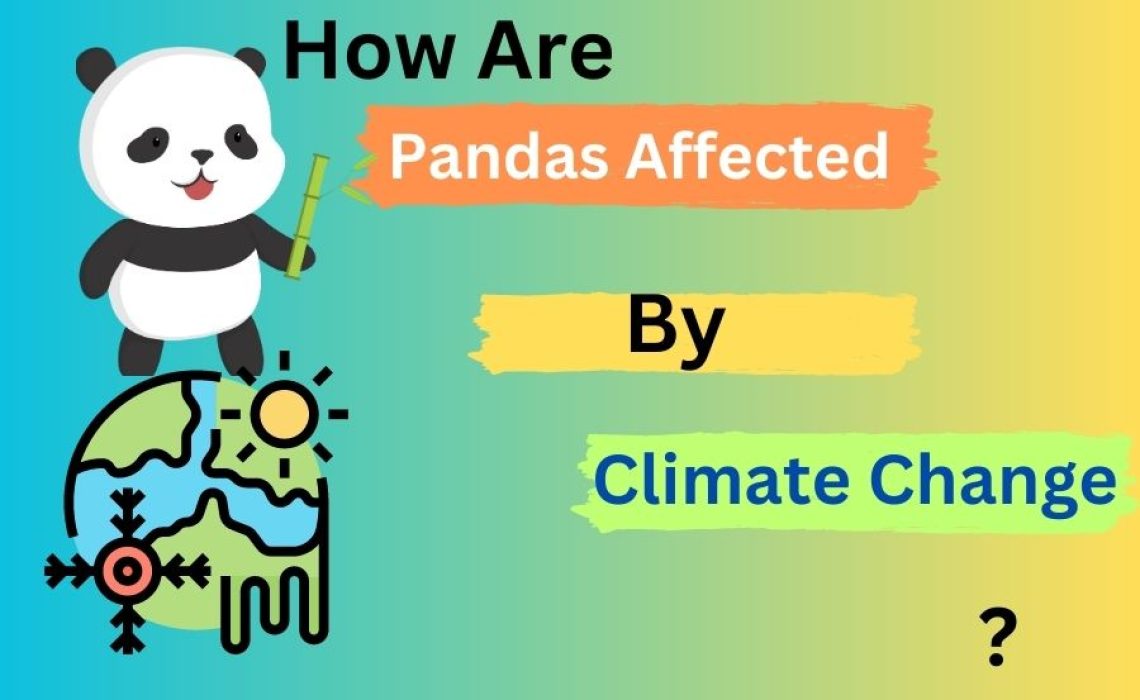The giant panda (Ailuropoda melanoleuca), an iconic symbol of wildlife conservation, inhabits the mountainous bamboo forests of China. As climate change transforms the planet, pandas face a unique set of challenges. In this article, we delve into the multifaceted ways pandas are affected by climate change and the potential consequences for their survival.
Table of Contents
ToggleWhat is Climate Change Definition?
Climate change? A complex, global issue. It refers to shifts – long-term ones – in weather patterns and average temps on Earth. The main cause? Greenhouse gases, like carbon dioxide, methane, and nitrous oxide. They trap heat, creating the “greenhouse effect.”
Humans play a role. Burning fossil fuels, deforestation, and industrial processes – all contribute. The result? Earth’s climate system alters, impacting ecosystems, societies, and the environment.
What are the signs? Melting ice caps, rising sea levels, and extreme weather events becoming more common. The consequences? Habitat loss, dwindling agricultural productivity, and increased natural disasters. Species suffer, including us.
Solutions? Cut greenhouse gas emissions. Use renewable energy. Adapt. It takes global cooperation and commitment. The Paris Agreement? A framework for collective action.
In a nutshell, climate change represents the long-term transformation of Earth’s climate due to human activities, with far-reaching consequences for ecosystems and societies alike. The battle against it? Ongoing, and crucial for our planet’s future.
Here are Some Reasons Pandas Affected By Climate change:
-
Shifting Bamboo Habitats: A Disappearing Feast
Pandas rely heavily on bamboo, making them vulnerable to climate-driven changes in bamboo distribution:
- Altered bamboo growth: Rising temperatures and changing precipitation patterns may impact bamboo growth, reducing the availability and quality of pandas’ primary food source.
- Fragmented bamboo forests: Climate change can cause bamboo habitats to become fragmented or shift to higher elevations, forcing pandas to adapt, migrate, or face dwindling food supplies.
-
Habitat Fragmentation: A Splintered Existence
As climate change alters landscapes, pandas confront the challenge of increasingly fragmented habitats:
- Barriers to movement: Human development and land use changes can create obstacles for pandas’ movement, hindering their ability to adapt to shifting bamboo habitats.
- Genetic isolation: Habitat fragmentation can lead to isolated panda populations, reducing genetic diversity and increasing their vulnerability to environmental changes and disease.
-
Extreme Weather Events: Nature’s Unpredictable Wrath
Climate change can intensify extreme weather events, which pose risks to pandas and their habitats:
- Landslides and flooding: Intense rainfall and storms can trigger landslides and flooding, destroying bamboo forests and threatening panda populations.
- Increased stress: Extreme weather events can place additional stress on pandas, potentially affecting their health, reproduction, and survival.
-
Indirect Effects: A Complex Web of Consequences
Climate change’s indirect effects on pandas can be just as significant as the direct ones:
- Altered predator-prey dynamics: Changes in habitat conditions and prey availability can impact the balance between pandas and their predators, affecting overall survival rates.
- Disease susceptibility: Warmer temperatures may facilitate the spread of diseases or parasites, threatening the health of pandas and other species in their ecosystem.
This is the main reason pandas are affected by climate change, if we contribute a few hours to protect our environment and wildlife then we can save pandas to climate changes.
Conclusion:
Climate change presents a complex array of challenges for pandas, whose survival hinges on their ability to adapt and thrive amidst these environmental transformations. Understanding these impacts is crucial for developing effective conservation strategies and promoting a sustainable future for these charismatic creatures. By addressing climate change and protecting critical habitats, we can help ensure pandas continue to enchant and inspire future generations.
FAQ
Q1: How does climate change affect pandas’ food source, bamboo?
A1: Climate change can impact bamboo growth through rising temperatures and changing precipitation patterns. This may result in reduced availability and quality of bamboo, which is the primary food source for pandas. Additionally, climate change may cause bamboo habitats to become fragmented or shift to higher elevations, making it more challenging for pandas to access their food.
Q2: How does habitat fragmentation impact pandas?
A2: Habitat fragmentation, exacerbated by climate change and human development, can create barriers to pandas’ movement, hindering their ability to adapt to shifting bamboo habitats. Fragmentation can also lead to isolated panda populations, reducing genetic diversity and increasing their vulnerability to environmental changes and diseases.
Q3: What are the consequences of extreme weather events on pandas?
A3: Climate change can intensify extreme weather events such as intense rainfall, storms, landslides, and flooding, which can destroy bamboo forests and threaten panda populations. Extreme weather events can also place additional stress on pandas, potentially affecting their health, reproduction, and survival.
Q4: How does climate change indirectly affect pandas?
A4: Climate change can have indirect effects on pandas through altered predator-prey dynamics, changes in habitat conditions, and prey availability. Warmer temperatures may also facilitate the spread of diseases or parasites, threatening the health of pandas and other species in their ecosystem.
Q5: What can be done to protect pandas from the impacts of climate change?
A5: Effective conservation strategies, such as habitat protection, restoration, and creating wildlife corridors to connect fragmented habitats, are crucial for helping pandas adapt to climate change. Addressing climate change by reducing greenhouse gas emissions and promoting sustainable practices can also contribute to a more secure future for pandas and their habitats.







1 thought on “How Are Pandas Affected By Climate change?”
Pingback: How Are Grizzly Bears Affected By Climate Change? - 2023